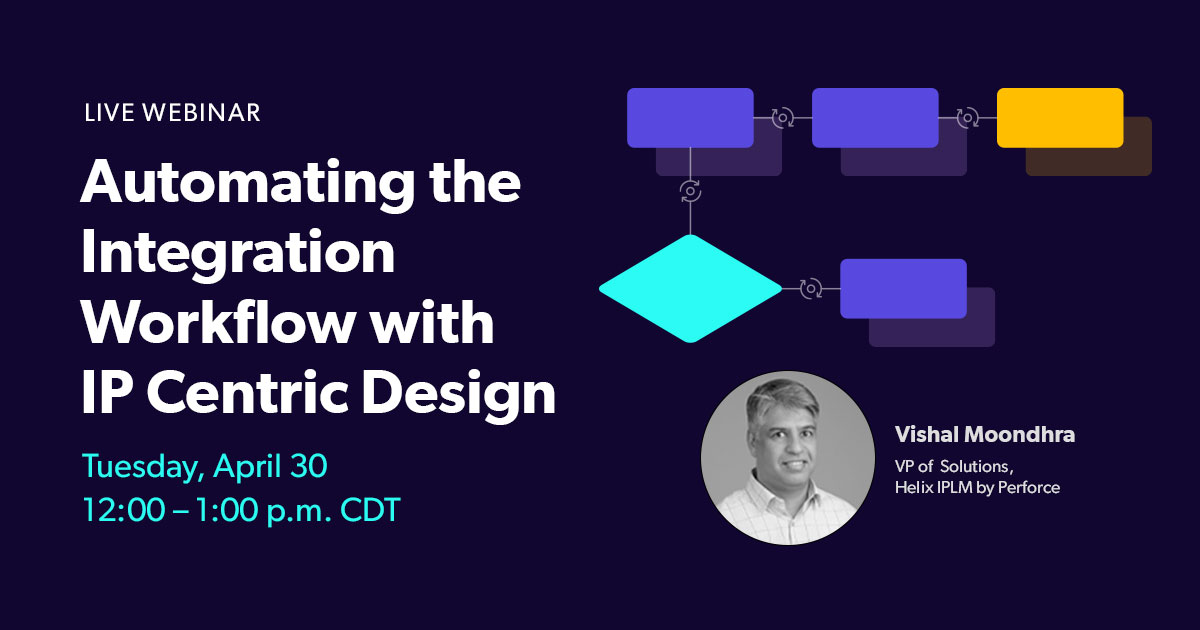
Subsystem and full-chip integration plays a crucial role in any project – particularly for large SoCs. Our upcoming webinar on April 30 confronts the typical challenges of this process and provides a detailed view into how IP centric design can help you solve them. Join us to learn how transforming your design flow can help your team reliably meet integration milestones, quickly debug issues, and enhance work quality and transparency.
In today’s landscape, the ongoing challenges of integrating design blocks into SoCs are clear. Teams are often working with a globally distributed workforce, overwhelmingly complex design data, and a lack of expertise on design blocks that were not developed locally.
As teams become more geographically dispersed, integration is complicated by the inclusion of more externally sourced and reused IPs, multiple design sites, and the difficulties of working across time zones. At the same time, the size, volume, and complexity of design files have also increased. This high volume of larger, more complex files can strain existing infrastructure and processes, causing delays and confusion. Lastly, a lack of local expertise on design blocks created by geographically distant teams makes it harder to address integration problems as they arise – leading to longer lead times, inefficient, spreadsheet-based debugging, and repeatedly missed integration milestones.
These complex, interrelated pain points introduce the need for a new and innovative approach. This is where an IP centric design methodology steps in. An IP, also referred to as a design block or module, is an abstraction of data files that defines an implementation, along with the meta-data that defines its state. In IP centric design, each element of the design – from internally reused and externally acquired IPs, to the design environment and the whole platform – is modeled as an IP. This allows the entire project and all related metadata to be modeled as a complete, hierarchical collection of IPs, including all versions and dependencies.
By leveraging an IP centric methodology, along with the use of “IP Aliases” and quality-based integration rules, teams can establish a streamlined, controlled, and transparent integration flow. This automated flow will enable teams to reliably meet key integration milestones, more easily debug integration issues, and improve overall quality.
We have some expert tips and essential best practice guidelines for creating, enforcing, and maintaining an IP centric design flow. The Automating the Integration Workflow presentation will give a more in-depth look at what elements are necessary to establishing an effective IP centric model, including annotation with rich metadata and a versioned, hierarchical Bill of Materials (BoM) that all team members can reference. We’ll also dive into how to support and hone your integration flow over time, giving examples of common governance rules your team can implement, as well as tips for how to consistently enforce them.
Getting your team onboard with this transformation and new approach can have a dramatic effect on your collaboration, productivity, go-to-market timeline, and quality. It will greatly reduce the SoC integration challenges your team struggles with, plus set a minimum quality requirement across all IP and provide an at-a-glance view into IP status and which blocks are ready for integration. And finally, establishing a secure and traceable IP centric design flow can make future IP reuse and integration easier.
Join us for our upcoming webinar, where we’ll walk through each step of the integration process through the lens of IP centric design. Register now to learn how to boost both efficiency and quality through a streamlined integration flow!
Also Read:
2024 Outlook with Adam Olson of Perforce
The Transformation Model for IP-Centric Design
Chiplets and IP and the Trust Problem
Share this post via:





Comments
There are no comments yet.
You must register or log in to view/post comments.